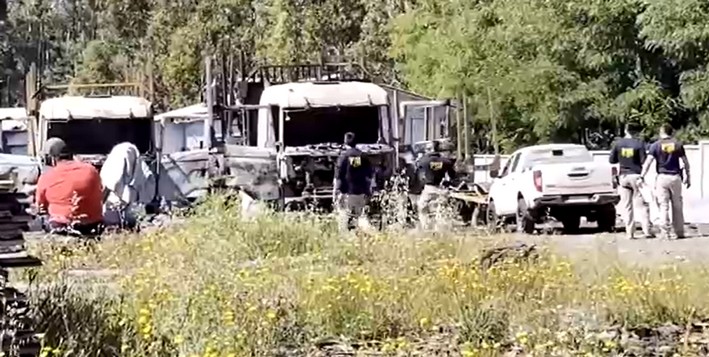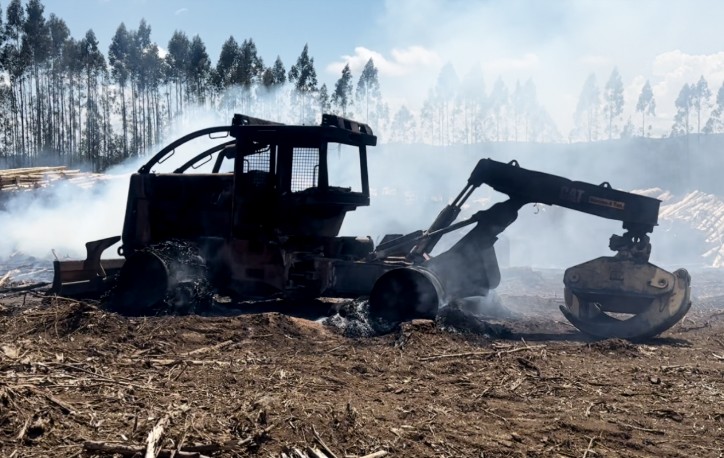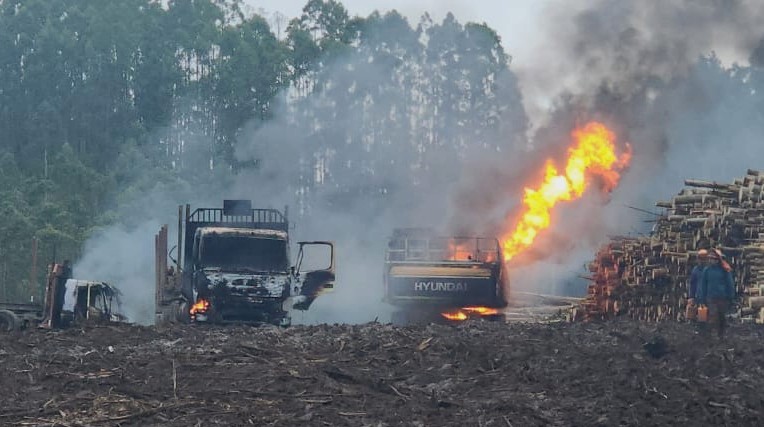Fire in Las Máquinas: 6 Years After the Greatest Tragedy of the Last 50 Years
On January 18, 2017, at the Santa Rosa de Cauquenes estate, in the area known as Las Máquinas, a mega-forest fire began that lasted until February 5, primarily affecting the regions of O’Higgins, Maule, and Biobío. According to experts from the European Union, the unusual severity of these fires is rooted in global warming. However, according to Jorge Gándara Welch, president of the Maule Forestry Board, the origin of this large-scale disaster was due to the irresponsible actions of one or more individuals who, through carelessness or intent, ignited a fire in an inappropriate location under extreme weather conditions.
The expert stated that this event became a global episode because, prior to it, the global scale for measuring fires only went up to the so-called "fifth generation" of fires, the most destructive type known. The "firestorm" is the first of the so-called "sixth generation," in terms of fireline intensity and spread speed, according to data from the European Union and CONAF in 2017.
He added that the "firestorm" experienced ultra-rapid spreads of up to 8,200 hectares (ha) per hour, with exceptional heat intensities exceeding 60,000 kW/m. The Las Máquinas fire burned around 187,000 ha, of which 115,000 were consumed by flames in a span of 14 hours.
"This resulted in an advance of 8,142 ha/hour during the night, creating a massive convective firestorm that spread a front reaching 42 km in width. Its run lasted for 21 km. However, beyond this, the Las Máquinas fire was joined by several others, generating what is called the 'Las Máquinas Fire Complex,' which collectively affected over 400,000 ha in less than a month," he detailed.
Given the magnitude of the disaster, professionals and firefighters from various countries around the world arrived in Chile, and the deployment of resources used to combat the fire was unprecedented in the country. Both the public sector—through CONAF, ONEMI (now SENAPRED), Firefighters, Armed Forces, Carabineros, Regional Governments, the Ministry of the Interior, and Municipalities, among others—and the private sector, through large and medium-sized companies, coordinated under a National Emergency Operations Committee (COE) to confront the disaster and its severe consequences.
The Las Máquinas fire particularly affected forest plantations, grasslands, shrublands, and natural forests of sclerophyllous and deciduous Nothofagus types. It also destroyed many homes and sawmills and claimed over 10 lives.
Economic Damage
Regarding the economic valuation of the damage to the forestry and agricultural sector caused by the fires between January 1 and February 2, 2017, Jorge Gándara stated that it amounted to $670 million USD, according to the Office of Agricultural Studies and Policies (Odepa). The figure breaks down into $110.7 million USD in native forests and $25 million USD in infrastructure.
For agriculture, losses were approximately $36 million USD, including fruit trees, grasslands, annual crops, and burned forage. 80% corresponded to grasslands and fruit trees, in similar proportions.
In livestock, the damage reached $1 million USD, including burned livestock and beehives, while in the forestry industry, the amount totaled $497 million USD.
Although these figures are official, according to the president of the Maule Forestry Board, they only represent immediate post-fire damage and do not reflect the true impact on the economy, the environment, and people. In fact, the fire mostly affected private resources owned by small and medium-sized businesses and/or landowners, whose recovery is nearly impossible without state aid. Many sawmills were left without supply, and some even burned down. The loss of productivity in thousands of hectares of soil, left to erosion, is not reflected in the official damage and loss figures.
Forest Rehabilitation Efforts
After the disaster, Gándara Welch noted that there were many public and private initiatives to recover the sector socially, environmentally, and economically. This task has been undertaken by the private sector through collective efforts like the "Forest Dialogue" and individual efforts by each affected company.
Under the presidential commitment to "Implement a program for the recovery of natural and productive heritage affected by the 2017 forest fires," a total of 655.5 ha were reforested in 2021 through the "Burned Forest Recovery Program," benefiting 36 small and medium-sized forest owners in the O’Higgins and Biobío regions. The total recovered from 2018 to 2022 through this program is 11,422.6 ha, benefiting 1,148 families, according to CONAF's 2018-2022 Report.
Meanwhile, the company Arauco S.A. reported that its main post-fire threat control activity was vegetation regeneration, primarily radiata pine within these conservation areas (native forest). These controls have been 100% manual, with no chemical applications.
The main areas where regeneration control work was carried out were the sclerophyllous forest of Lolol (312 ha), the Maule forest with ruiles in Porvenir and El Fin (380 ha), the Maule forest with ruiles in Pitao de Quivolgo (270 ha), the Santa Elena wetland (32 ha), and the Name marshes (45 ha). (45 ha).
Finally, the Ruil tree species (N. alessandrii) was the most affected conservation value in these fires, also being a natural monument. Arauco has participated in various working groups and alliances, including ruil and native species planting under the Environmental Protection Fund (FPA) Project of the University of Talca; ruil planting in alliance with INFOR, participation in the Forest Dialogue in the Empedrado commune, the Ruil Restoration Commission, producing material for vegetative propagation of ruil in the Quivolgo nursery, and participation in the Ruil Roundtable under the Forest Dialogue framework to coordinate seed collection with the University of Concepción, University of Talca, INFOR, CONAF, and CMPC, among others.
Lessons Learned
Finally, Jorge Gándara Welch noted that the 2017 mega-fire demonstrated the need to implement public, private, and community strategies for a coordinated and rapid response in fire control and prevention. Hence, the need for dialogue, experience-sharing, and integrating risk prevention agendas.
The major pending challenge for the Empedrado commune is addressing the situation of approximately 3,578.9 ha of plantation lands belonging to 645 properties and 617.71 ha of native forests belonging to 125 properties—all owned by smallholders—with severe post-fire damage and post-fire pine regeneration exceeding 3 meters. This underrecognized situation demands urgent public funding action, addressing not only the risk of new fires involving this biomass but also the ecological, economic, and social tragedy affecting this population and commune.









